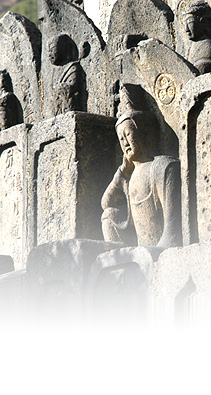Plot Outline
"Ah, all peoples and all nations, keep this in mind, June 29th, 1907, this is the day of the extermination of Yanaka Village by the Japanese government." (Kanson Arahata, The extermination of Yanaka)
"The roadsides, once so attractive, were now lined with browned and withered vegetation as though swept by fire. ... No witchcraft, no enemy action had silenced the rebirth of new life in this stricken world. The people had done it themselves." (Rachel Carson, Silent Spring)
Rachel Carson first sounded the alarm about general environmental contamination. But about 80 years before it, in the Watarase River running down from the mountains in the Ashio area, which had once boasted a flourishing agriculture and fishing industry, copper-mine poisoning killed fish and damaged crops. The victims decided to fight for the closure of the Ashio Copper Mine and the leader and organizer of the protest movement was Shozo Tanaka, who said, "I am a Shimotsuke peasant."
Until then, Ashio had become a copper mine with the highest output in Japan. In the Diet session, Shozo Tanaka, a member of the Lower House, demanded that mining at Ashio be stopped, showing withered bamboos and crops and explaining devastating damage by poisoning. "To kill the people is to kill the nation"---Shozo's warning scandalized the Diet and encouraged the farmers to fight.
Aritomo Yamagata, who aimed at the expansionism of the military-bureaucratic cliques, attempted to pass a tax increase bill in view of the Russo-Japanese War. Instead, he passed a bill which allowed the Diet members to receive 2.5 times of their annual salary. Shozo refused to receive the salary and reaffirmed his determination to fight with the farmers. The farmers' protest movement continued to intensify. Shozo risked his life to submit a direct petition to the Emperor, demanding that the mining operations be stopped. Newspapers reported his action and heightened people's awareness of the poisoning problem. A pollution investigation committee was organized and a lot of students and volunteers took part in the movement. Women's protests broke out across the affected area.
The government proposed to turn the Watarase River basin into a flood control reservoir and use the villages there as a catchment basin for poisoned water. Then, Toshima and Kawabe villagers resisted against the project by refusing to perform military service and pay taxes and won great success. Nevertheless, Yanaka Village was to be abolished through a series of political tricks.
While the government made every effort to turn public attention toward the war of aggression, Shozo constantly appealed to abolish all military expenditure and devote the amount to education. The displaced people of Yanaka Village suffered forced emigration to Hokkaido and underwent severe hardships, while the remaining villagers were attacked by floods. Struck by their fortitude, Shozo conducted a survey in the rivers throughout the Kanto district, drew a precise map, and severely criticized the government's policies. "True civilization does not devastate mountains, nor rivers, nor villages; nor does it kill humans"---his words ring just as true today as they did all those long years ago. Shozo lived up to his words and left them for us.
Cast
CAST
- Meiji Ishigami
- Amo
- Toru Ito
- Motoi Funatsu
- Yutaka Nakamura
- Hiroshi Hiroo
- Satoshi Hiroto
- Ittoku Yamanaka
- Ryuji Niwata
- Hanako Niwata
READING
- Yumiko Fujita
- Makoto Akatsuka
INTERVIEWS/TESTIMONY
- Hiroshi Komatsu
- Hisao Sasaki
- Sanae Shimada
- Sozo Shimada
- Kiyomi Chiba
- Hideaki Tamura
- Tatsuo Nara
- Seiichiro Hirama
- Satoru Fukawa
- Kanehei Hoshino
- Sayoko Yoneda
NARRATOR
DIRECTOR/SCRIPT
CAMERA
MUSIC
PROJECT
PRODUCTION
- Documentary Film In Sekihin Production Committee
|
 |
